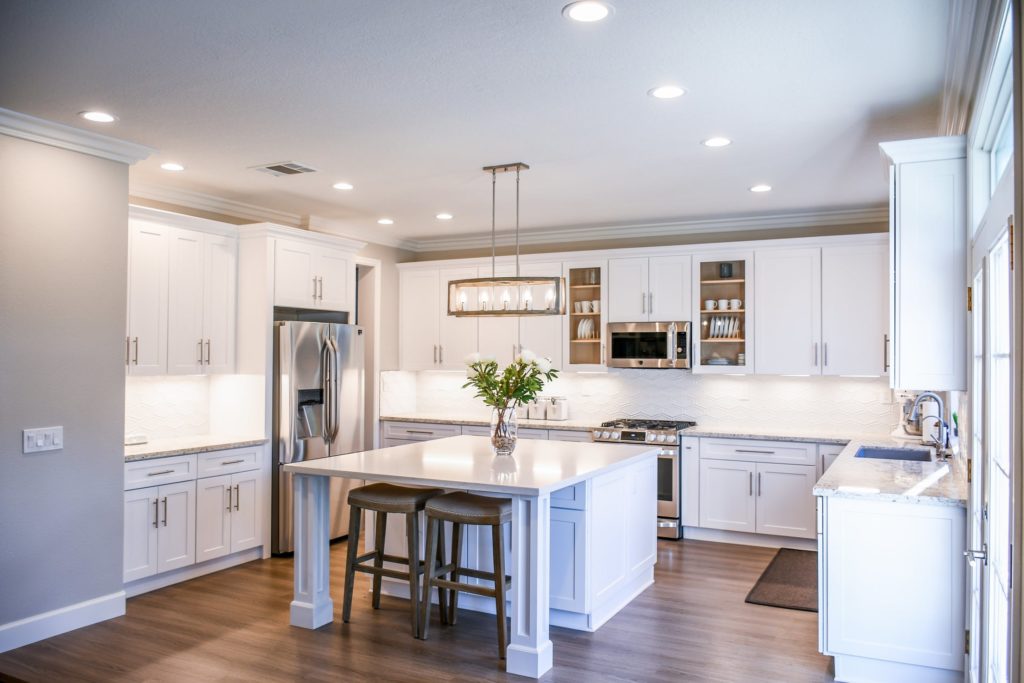Eco-friendly renovations are becoming increasingly popular as homeowners seek to reduce their environmental footprint, save on energy costs, and create healthier living spaces. Making your home greener has numerous benefits, including lower utility bills, improved indoor air quality, and increased property value. By incorporating sustainable practices into your renovation plans, you can contribute to a more sustainable future while enjoying a comfortable and efficient home. Today, we will cover essential tips for eco-friendly renovations that will help you transform your home into a greener haven.
1. Eco-Friendly Bathroom Upgrades
Bathrooms are prime areas for eco-friendly upgrades due to their high water usage. Start by installing water-saving fixtures such as low-flow toilets, showerheads, and faucets. These fixtures use significantly less water without compromising performance and help conserve this precious resource.
Consider using sustainable materials for bathroom remodeling. Bamboo and recycled glass are excellent choices for countertops, cabinetry, and flooring. They are durable, stylish, and have a lower environmental impact compared to traditional materials.
Energy-efficient lighting and ventilation are also essential for an eco-friendly bathroom. Replace incandescent bulbs with LED lights, which consume less energy and last longer. Ensure your bathroom has adequate ventilation to prevent mold and mildew, which can affect indoor air quality. Energy-efficient exhaust fans with humidity sensors are a great addition to any eco-friendly bathroom. For these upgrades, consulting a professional bathroom remodeling company can ensure that your project is both efficient and environmentally friendly.
2. Energy-Efficient Windows and Doors
Installing energy-efficient windows and doors can significantly reduce energy loss, helping maintain a comfortable indoor temperature year-round. Energy-efficient windows and doors are designed with advanced materials and technologies that provide superior insulation.
When choosing new windows and doors, look for options with low-E glass, multiple panes, and insulated frames. These features help keep heat inside during winter and outside during summer. Additionally, properly sealing and weather stripping your windows and doors prevents drafts and further enhances energy efficiency.
Maintaining these upgrades is simple: regularly check for and repair any gaps or damage to the seals and clean the glass to ensure maximum light penetration.
3. Sustainable Flooring Options
Due to their production processes and materials, traditional flooring options like carpet, vinyl, and laminate can have a significant environmental impact. Instead, opt for sustainable alternatives such as bamboo, cork, or reclaimed wood.
Bamboo is a rapidly renewable resource that is incredibly durable and aesthetically pleasing. Cork is another renewable material that provides excellent insulation and a comfortable underfoot feel. Reclaimed wood not only adds character to your home but also reduces the demand for new lumber, preserving forests and reducing waste.
When installing sustainable flooring, use eco-friendly adhesives and finishes to minimize indoor air pollution. These materials are not only better for the environment but also contribute to a healthier indoor environment.
4. Solar Panel Installation
Utilizing solar energy is one of the most effective ways to make your home more eco-friendly. Solar panels convert sunlight into electricity, reducing your reliance on fossil fuels and lowering your utility bills. They can be installed on rooftops or in other sunny areas around your property.
Before installing solar panels, assess your home’s energy needs and the available sunlight. Consult with a reputable solar panel provider to determine the best system for your home. Many governments and utility companies offer incentives and rebates for solar panel installations, making this eco-friendly upgrade more affordable.
Once installed, solar panels require minimal maintenance. Keep them clean and free of debris to ensure maximum efficiency. Investing in solar energy is a long-term commitment that provides substantial environmental and financial benefits.
5. Insulation Improvements
Proper insulation is key to maintaining a comfortable and energy-efficient home. Inadequate insulation can lead to significant energy loss, forcing your heating and cooling systems to work harder. By improving your home’s insulation, you can reduce energy consumption and lower your utility bills.
Eco-friendly insulation materials, such as cellulose, wool, and recycled denim, are excellent choices for enhancing your home’s energy efficiency. These materials are not only effective insulators but also have a lower environmental impact compared to traditional options like fiberglass.
Focus on insulating areas that are prone to energy loss, such as attics, walls, and basements. Sealing gaps and cracks around windows, doors, and other openings also helps prevent drafts and further improves insulation. Properly insulating your home is a straightforward yet highly effective way to boost its energy efficiency and comfort.
6. Green Roofing Solutions
Green roofing solutions offer numerous benefits, including improved insulation, reduced stormwater runoff, and enhanced aesthetic appeal. There are two main types of green roofs: intensive and extensive systems. Intensive green roofs are similar to traditional gardens, featuring a variety of plants, shrubs, and even trees. They require significant structural support and maintenance but offer extensive benefits, such as increased biodiversity and improved air quality.
Extensive green roofs, on the other hand, are lightweight and feature low-maintenance plants like sedum or grasses. These roofs provide excellent insulation and absorb rainwater, reducing runoff and mitigating the urban heat island effect. Regular maintenance includes weeding, watering, and occasional fertilization.
7. Low-VOC Paints and Finishes
Traditional paints and finishes often contain volatile organic compounds (VOCs) that can release harmful chemicals into your home’s air and may impact indoor air quality and health. Low-VOC paints and finishes offer a safer, eco-friendly alternative. These products emit fewer pollutants, making them better for both your health and the environment.
Using low-VOC paints and finishes in your home renovation projects can significantly improve indoor air quality, reduce health risks, and contribute to a more sustainable living space. Proper application techniques and adequate ventilation during painting further minimize potential VOC exposure.
8. Smart Home Technology for Energy Savings
Integrating smart home technology can significantly enhance your home’s energy efficiency. Smart thermostats, lighting systems, and energy monitors allow you to manage your energy effectively. It reduces waste and lowers utility bills.
Smart thermostats learn your schedule and adjust the temperature accordingly, optimizing heating and cooling without compromising comfort. Smart lighting systems use sensors and timers to ensure lights are only on when needed. At the same time, energy monitors provide real-time insights into your energy consumption, helping you identify areas for improvement.
Implementing these technologies can make your home more efficient, convenient, and environmentally friendly. It can also help you achieve save energy and contribute to a greener lifestyle.
Conclusion
Eco-friendly renovations offer numerous benefits, from reducing energy costs and environmental impact to improving indoor air quality and increasing property value. You can create a greener home by installing energy-efficient windows and doors, making eco-friendly bathroom upgrades, upgrading to sustainable flooring, installing solar panels, and improving insulation. Additionally, green roofing solutions, efficient heating and cooling systems, low-VOC paints, smart home technology, and water conservation systems further enhance your home’s sustainability.




